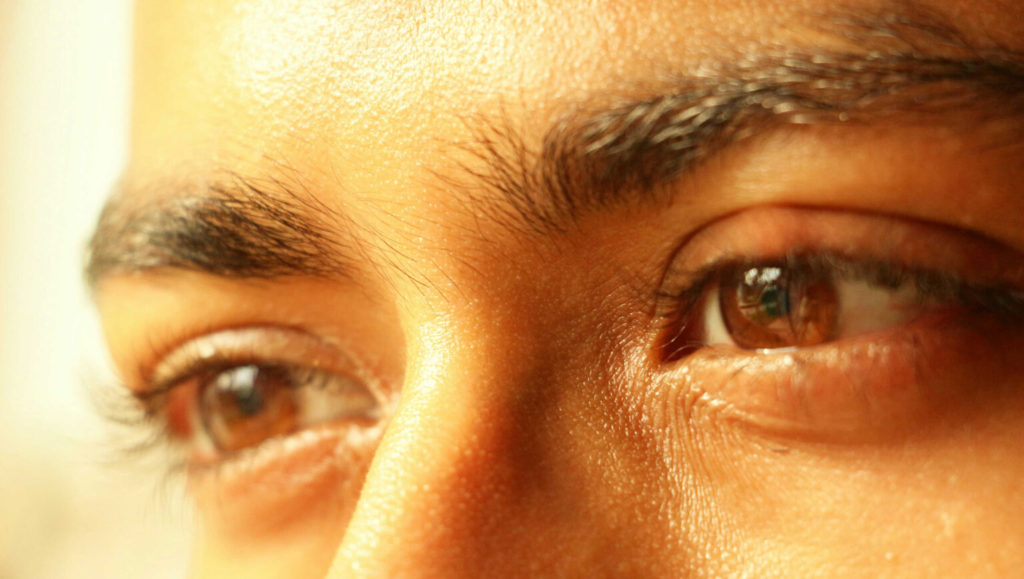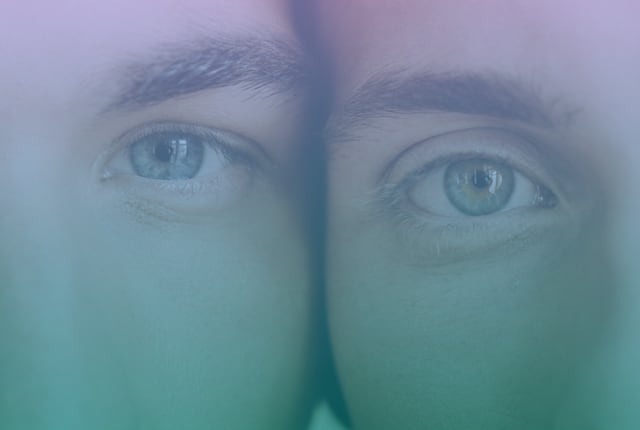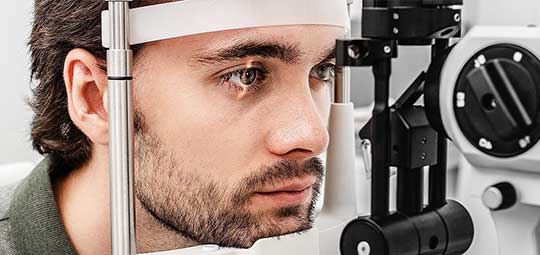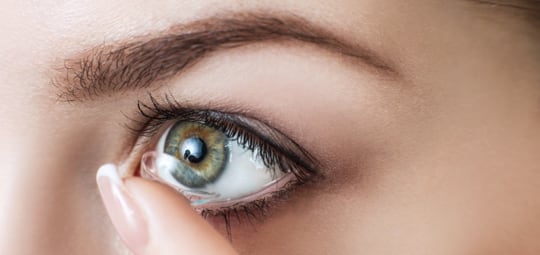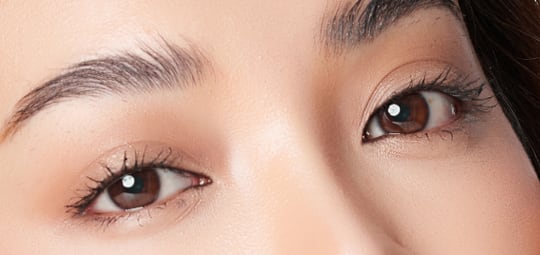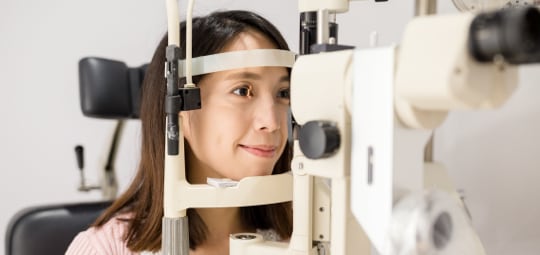Dry eye syndrome is a common condition that affects many people. This condition can be persistent and extremely uncomfortable to those who suffer from it. It can vary in severity and symptoms but is ultimately a pesky issue that almost anyone can be affected by.
Dry eye syndrome occurs when the natural lubrication system of the eyes is not functioning adequately or is being hindered by a range of factors. Dry eye can occur if you don’t produce enough tears, or if the tears that you do produce are of poor quality.
What Causes Dry Eye Syndrome?
The fundamental cause of dry eye syndrome is the failure to provide suitable lubrication for the eyes. Tears are an essential part of your ocular health. The tear film forms a physical barrier that protects the eyes from infection and other surface issues, washes away any debris that could damage the surface of the eyes, and keeps the eyes lubricated effectively. Tears are composed of a complex mixture of water, oil and mucous. Problems with any of these layers can cause dryness. For example, the oil layer of the tears are produced by small glands that line the eyelid, called meibomian glands. When these glands become clogged, the adequate amount of oil is not produced. Blocked meibomian glands are more often seen in patients with a lot of inflammation along their eyelids, for example patients who suffer from rosacea or other skin disorders.
Dry Eye syndrome typically results from two distinct situations: decreased tear production (your body is not making enough tears) or increased tear evaporation (the tears don’t stay on the ocular surface for long enough).
Decreased Tear Production:
Dry Eye Syndrome can occur when your body is not able to produce enough tears. The official term for this is Keratoconjunctivitis Sicca. Common causes include:
- Aging
- Side effects of certain medications (for example, antihistamines, antidepressants, hormone replacement therapy, oral contraceptives etc.)
- Certain medical conditions can cause it (for example Rheumatoid arthritis, lupus, Sjogren’s syndrome, thyroid disorders, vitamin A deficiency etc.)
- Damage to the tear glands (through mechanical accident, inflammation or radiation)
- Side effect of Laser Eye Surgery (which is most often temporary)
Increased Tear Evaporation
Dry Eye syndrome can also occur when the tears evaporate too quickly. This is referred to as Evaporative dry eye syndrome. Common causes include:
- Behavioural issues (ie. staring at computer screens for too long, which often leads to decreased blinking)
- Physiological issues (when the eyelids physically turn in (entropion) or out (ectropion)
- External factors (being in windy, smoky, dry environments
- Contact Lens Wear
What Are The Symptoms Of Dry Eye Syndrome?
The diagnosis of dry eye syndrome is often fairly simple, characterized by symptoms that persist over time until treatment is undertaken. However, there are also tests that can be done to determine if the dryness is a production problem or an evaporative problem; these tests include the use of the slit lamp to get a magnified view of the eyes, the Schirmer test to discern the amount of tears produced, and the tear breakup time test to evaluate how quickly your tears evaporate.
Whilst the optometrist will have the expertise to decide on the condition of your eye, there is quite an extensive list of symptoms to look out for in cases of dry eye syndrome. Some symptoms that should be highlighted are:
- A sensation of scratchiness, burning, or stinging
- General itchiness of the eye, causing more irritation if scratched
- Photophobia (light sensitivity), making it difficult to look at bright screens and go out during the day without sunglasses
- Redness of the eyes, persisting over time and being quite noticeable
- Blurry vision, which can be temporarily reduced by blinking but quickly returns
- An achy feeling of the eyes
- The continuous feeling of an object being in the eyes, such as dust or an eyelash
- Pressure in the eyes
- watery discharge or excessive tearing
These symptoms can all be compounded by external factors. Excessive screen time, such as on computers, televisions or smartphones, windy and dry external conditions, smoking, and poor diet are just some of the factors that can hinder your recovery from dry eye syndrome and exacerbate your symptoms of discomfort.
How Is Dry Eye Syndrome Treated?
Once it has been confirmed that you have dry eye syndrome, the next step will be to discuss treatment. The treatments are dependent on the severity of your condition.
Treatments for dry eye syndrome include:
- Eye Drops: The most common approach to tackling dry eye syndrome begins with using eye drops such as artificial tears. These drops are used to lubricate the eyes. They are widely available and many people use them even in the short term. They can help with dry eye syndrome by supplementing the natural tears that your eye produces in cases were there is a lack of tear production and by adding the missing oil components of the tears in meibomian gland dysfunction.
- Lifestyle Changes: Your ocular health can be greatly affected by your behaviours and what you put into your body. Eating healthier, reducing smoking and alcohol intake, and changing the amount of time you spend on devices can help reduce dry eye symptoms. Also making sure that you drink enough water plays a big role in this condition.
- Home Care: There are a few things you can do at home to help treat your condition. Using a humidifier around your home, especially during the dry winter months helps to add moisture to the surrounding air where you live, applying a warm washcloth to your eyes helps to clear up your meibomian glands in the eyelids, and decreasing or eliminating your use of soft contact lenses helps to decrease your dry eye symptoms greatly.
- Punctal Plugs: These rice grain sized plugs are placed in the tear ducts to block the drainage of the tears, leaving more tear film available on the surface of the eye. The use of punctual plugs can be temporary or longer term, they are completely reversible and when inserted carefully by your optometrist, you don’t feel them at all. Punctual plugs are an easy and effective tool that can be used to manage the symptoms of dry eye syndrome.
- Medications: If conservative measures of treating dry eye syndrome are not sufficient, there are also prescription medications that can be used to treat the problem. These drugs are used to make the body produce more tears in cases where there is a decrease or lack of tear production.
- Moisture Goggles: These are used to ensure maximal moisture retention, while protecting the eyes from external factors such as dust and smoke.
- Specialty contact lenses: Scleral contact lenses are made of a rigid gas permeable material and are filled with preservative free artificial tears that help lubricate the eyes continuously throughout the day. This is a great option for many people who suffer from dry eye syndrome and who also want to wear contact lenses or have trouble seeing clearly with their glasses.
- Medical Procedures: In some cases a doctor may recommend the complete closing of tear ducts to reduce drainage so that tears stay on your eyes for longer periods of time. This is not as commonly done but in some cases it is necessary and helps a lot with the treatment and management of chronic dry eye syndrome.
Is Dry Eye Syndrome Painful?
Unfortunately, one of the primary symptoms of dry eye syndrome is a feeling of discomfort, irritation, and pain in the eyes. The surface tissue of the eye, the cornea, is the most sensitive part of the entire body. When the tear film is disrupted it can result in feelings of discomfort and pain. This will vary depending on the severity of the problem, however, in severe cases it can have a remarkably negative impact on a person’s quality of life.
Other symptoms of this condition are more common than pain, but if you are experiencing intense pain from dry eye syndrome then it is recommended to mention this as soon as possible to your doctor because there may be some more complex factors involved. The pain that comes from dry eye syndrome can be managed and typically subsides with effective treatment.
What Should You Do If You Think You Have Dry Eye Syndrome?
If you feel that you have dry eye syndrome, then it is important to see your optometrist to determine the cause of the disorder and the best way to tackle the issue. You can also start your own self-care in the meantime. Here are a few immediate things that you can do:
- Start using artificial tears. These eye drops are widely available over the counter at pharmacies and can help reduce symptoms of dry eye syndrome. Be sure to purchase the correct drops that your doctor recommends and use as directed because each drop targets a different mechanism making them effective for some cases but not all and some over the counter drops can actually be harmful to the eyes especially if used in excess.
- Decrease exposure to external factors. This can be environmental, such as trying to stay out of windy and dry air conditions, or behavioural such as decreasing time spent in front of a screen for extended periods of time. Try to practice the 20-20-20 rule. When doing your computer work be sure to take a 20 second break every 20 minutes and look at something 20 feet away to give your eyes a rest and avoid causing unnecessary strain or exacerbate the symptoms of dry eyes.
- Stay hydrated and well nourished, eating a balanced diet, rich in omega three fatty acids and reducing alcohol intake can help with your overall ocular health.
If you think you have dry eye syndrome the best recommendation is for you to book an appointment with an eye care specialist. An optometrist can conduct a thorough examination of your eyes, use their expertise and equipment to diagnose the underlying cause of your symptoms, and provide an effective treatment so that you can recover swiftly.
Yonge & College Optometry are among some of the top optometrists in Toronto, and can provide comprehensive eye exams to diagnose and treat dry eye syndrome. Our highly experienced doctors are friendly and can offer a full analysis of your ocular health, as well as provide a treatment plan for you to properly manage your dry eye syndrome or other ocular health concerns. We are located on the corner of Yonge Street and College Street. To request an appointment please visit our contact page, we will be happy to help.


